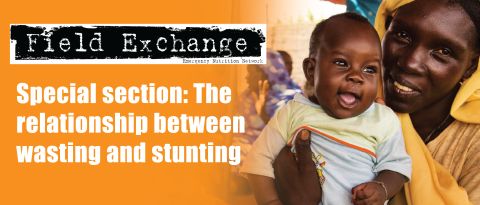Patterns of wasting and stunting in Venezuela
This is a summary of the following paper: Raffalli S & Villalobos C (2021) Recent patterns of stunting and wasting in Venezuelan children: Programming implications for a protracted crisis. Frontiers in Sustainable Food Systems, 5, 638042 (https://doi.org/10.3389/fsufs.2021.638042)
As protracted crises proceed, the problem of persistent wasting becomes increasingly evident. However, many humanitarian programmes that target wasting have a limited impact on the underlying causes that contribute to its persistence and on the mitigation of stunting. While usually described separately, wasting and stunting frequently co-exist (concurrence) with these children having an increased risk of mortality. This study calls into question the efficacy of humanitarian programmes and stimulates the debate on whether the nutrition sector should also consider stunting as a target in protracted crises.
This study reviewed the patterns of stunting and wasting among vulnerable children under five years of age in Venezuela which is experiencing a protracted refugee crisis. The study analysed 46,462 anthropometric records from children screened at Caritas Venezuela’s Points of Care between 2017 and 2019. Based on the World Health Organization’s 2006 growth standards, this study showed that from 2017 to 2019, the stunting prevalence increased from 28% to 32%, the wasting prevalence decreased from 15% to 11% and the concurrence of stunting and wasting slightly decreased from 5% to 4%.
The analysis also found that the odds of wasted children being stunted were 1.079 times greater than for non-wasted children. Similarly, the odds of stunted children being wasted were 1.085 times greater than for non-stunted children. Although age was not statistically associated with stunting, it did reduce the likelihood of being wasted.
Furthermore, each additional month of age reduced the odds of being concurrently wasted and stunted by 1.16%. The children’s sex had a significant association with the probability of both stunting and wasting, whereby the odds of stunting and wasting were higher amongst boys compared to girls. This study also found sizable associations between food insecurity and both stunting and wasting. However, access to clean water was only associated with higher levels of wasting.
The authors suggested these findings indicate that stunting should be targeted as a humanitarian priority in protracted crises to mitigate the growth failure in children facing multiple nutritional deficiencies and as an approach for preventing persistent wasting.
Postscript
Susana Raffalli is Senior Adviser to the Humanitarian Response, Cáritas de Venezuela
Carlos Villalobos is Assistant Professor at the Facultad de Economía y Negocios at the University of Talca
In Venezuela, warnings of a nationwide humanitarian crisis began in 2014. The first reports of an increase in acute malnutrition were registered by Caritas’ sentinel sites in the country's poorest parishes. The increase of stunting and the massive outmigration are powerful indications of the protracted nature of the crisis. After five years of programme delivery, we analysed our datasets driven by concerns around coverage, relapse and reoccurrence rates and around the urgency to guide our response beyond anthropometric recovery.
We found that practically all the children screened had some degree of growth retardation where they reached the < -2 SD weight-for-age Z-score (WAZ) threshold. More than 80% of these children were not wasted and therefore not admitted to the programme.
The Humanitarian Response Plan for Venezuela is still underfunded. Many humanitarian appeals are still not flexible towards including children at risk or supporting programming options for stunting mitigation. Access to humanitarian supplies, especially therapeutic options, is under constraint. Given these circumstances, we are trying to increase evidence for:
- Expanding the admission criteria to capture children at high risk of nutrition-associated mortality. We are validating the viability of options such as changes to weight-for height Z-score (WHZ) thresholds, the use of WHZ and height-for age Z-score combined to capture children with concurrent wasting and stunting or using WAZ as an admission criterion (analysis in progress).
- Supporting the expanded admission criteria to cover children in the early stages of acute malnutrition aiming to reduce treatment duration, relapses and the demand for therapeutic foods.
- Improving the quality of protocols for stunted children.
Our aim is to meet humanitarian needs in such a complex and protracted crisis beyond a lifesaving approach, advocating for the mitigation of nutrition risk as early and for as long as necessary.


